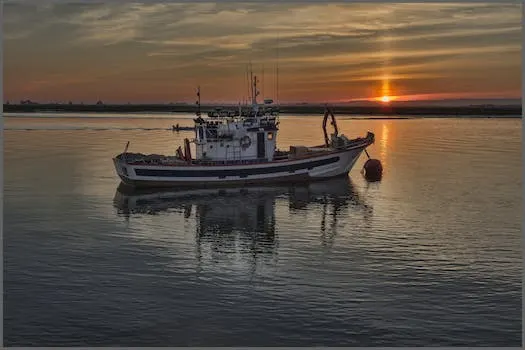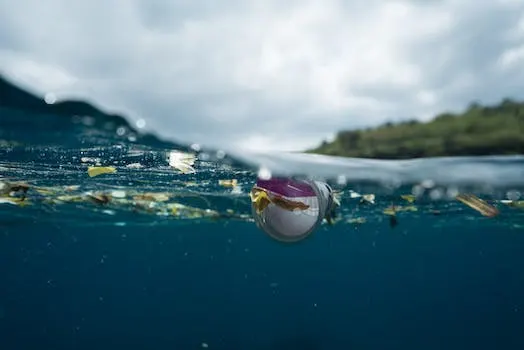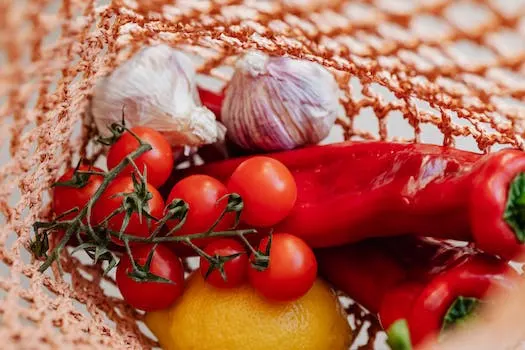
How to Tell if Fish is Sustainably Sourced
Shopping for seafood can be a challenge, especially when it comes to determining if the fish you're buying is sustainably sourced. Labels like "wild-caught" or "sustainably harvested" can provide some insight, but there are other factors to consider as well. In this article, we'll explore what sustainable fishery means and how to identify sustainably sourced fish.
Dr. Stephen Cimarusti of the University of Southern California explains that when it comes to farm-raised fish, the type of feed is an important factor in determining sustainability; many wild-caught fish cannot earn organic designation. The Marine Stewardship Council (MSC), a leading wild-caught seafood standard setter, has established criteria for sustainable fishing practices and certifies fisheries that meet these standards.
When shopping for sustainable seafood choices, prioritize local sources of wild-caught fish and shellfish from diverse species; avoid farmed caviar from beluga sturgeon or other endangered species; and look for MSC certification labels on products such as salmon which meets – and exceeds – requirements for sustainability harvesting. Additionally, industrial fishing has had a significant impact on global fish stocks so seek out programs that provide guidance on sustainable wild caught and farmed seafood options such as those certified by MSC or other organizations with similar standards.
Fortunately there are plenty of delicious options available when it comes to sustainably harvested or raised seafood choices including salmon, oysters, mussels, clams and more! By following these guidelines you can make informed decisions about your purchases while supporting responsible fishing practices at the same time!
What is Sustainable Fishing?
Sustainable fishing is a method of harvesting fish that ensures the species are not overfished or harvested in an unsustainable manner. It helps to protect marine habitats and the health of the fish population, while also providing a stable source of seafood for consumers. Sustainable fishing practices also help maintain healthy fish stocks, which can help prevent fishery collapses. People have fished sustainably for centuries, using methods that respect marine ecosystems and adapt to the reproductive rate of fish to maintain a balance and ensure the survival of all species.
Sustainable seafood is seafood harvested or produced in a way that supports productive fisheries and coastal communities while maintaining stock levels, catch volume, species conservation status, environmental impact from fishing gear and bycatch (incidental catch) of non-targeted species. This type of fishing respects marine ecosystems by taking into account factors such as reproductive rates so as to ensure sustainability for all species involved in the process.
The goal behind sustainable fishing is to leave enough fish in the ocean so that future generations can continue to benefit from it without depleting resources or damaging habitats. It also seeks to provide economic stability for people who depend on fishing as their livelihoods by ensuring they have access to sustainable sources of food without compromising their ability to make a living off it. Sustainable fisheries are managed responsibly with regulations designed specifically with this purpose in mind – protecting both people’s livelihoods and our planet’s resources at once!
How to Identify Sustainable Fish
When it comes to shopping for fish, it is important to look for labels that indicate the fish is sustainably sourced. These labels may include “sustainably harvested”, “certified sustainable”, or “responsibly sourced”. To ensure you are eating fish that has been sustainably harvested or produced, check to see if a reputable organization has deemed the species responsibly sourced. For example, Raincoast Trading salmon is certified sustainable seafood and Seattle Fish Company offers certified sustainable rainbow trout. Additionally, many seafood companies provide information about their fishing methods on their websites so you can learn more about the fish you are buying.
In order to make sure your seafood purchases are supporting sustainability efforts, look for eco-labels such as Aquaculture Stewardship Council (ASC) and Marine Stewardship Council (MSC). These organizations certify products as being responsibly sourced and help consumers make informed decisions when purchasing seafood products. Greenpeace also urges retailers like Target to keep these certifications in mind when stocking shelves with fresh and frozen seafood items. Paper based products can also be certified as sustainably harvested by a number of organizations such as Forest Stewardship Council (FSC).
When shopping for fish or other types of seafood it is important to take into account where the product was sourced from and how it was caught or farmed in order to ensure sustainability practices were followed throughout production process. By looking out for labels indicating sustainability certification from reputable organizations like ASC and MSC along with researching fishing methods used by companies selling these products online will help you identify which items have been responsibly sourced so that you can make informed decisions when purchasing your next meal of sustainable fish!
Look for Certifications
When looking for sustainably sourced fish, one of the best ways to ensure that you are getting a product that meets the highest standards is to look for certifications. The Marine Stewardship Council (MSC) certification process is one of the most reliable ways to identify sustainable seafood. This certification requires fisheries to meet strict standards for sustainability, including protecting the environment, conserving fish stocks and ensuring sustainable fishing practices. To be sold with the MSC blue fish label, seafood must come from a fishery certified against a strict set of science-based criteria that verifies how much fish can be caught without damaging marine ecosystems or depleting stocks. The MSC logo on packaging or checking their website will provide you with a list of certified sustainable fisheries. Sustainable fishing means leaving enough fish in the ocean, respecting habitats and ensuring people who depend on fishing can maintain their livelihoods. With an MSC certification you can rest assured knowing that your seafood has been sustainably sourced and meets all necessary requirements for sustainability.
Check the Source
When it comes to buying seafood, it is important to check the source. Wild-caught fish are generally more sustainable than farmed-raised fish, as wild-caught fisheries are less likely to cause environmental damage. Additionally, it is important to make sure that the fish is not from an area known for overfishing or unsustainable fishing practices. To understand the differences between wild-caught and farmed-raised fish, one must consider the impact of sociodemographics, habits and frequency of fresh fish consumption. It is often said that wild caught fish is superior to farmed raised; however this may be too much of a generalization as there are many factors at play such as mercury content or cost differences between wild caught and farm raised options. To ensure you are making a sustainable choice when purchasing seafood, look for labels indicating origin such as “wild-caught” or “farmed-raised” and research any potential concerns about mercury content or other issues related to sustainability before making your purchase.
Buy Local
Buying local fish is a great way to ensure that the seafood you're consuming is sustainably sourced. Local fisheries are more likely to practice sustainable fishing methods and be transparent about their practices, which makes it easier for consumers to make informed decisions. Additionally, buying local fish means you’re supporting your local fishermen and economy.
When looking for sustainable seafood, there are certain rules to follow. Community Supported Fisheries (CSFs) are a great way to get domestic, wild-caught seafood delivered right to your door while also rewarding sustainable fishing practices. If you'd like an even more direct connection with the source of your food, look for products that have an independent certification label or ask questions at the store or restaurant where you're purchasing from.
Buying locally-sourced and sustainably-caught seafood is not only beneficial for the environment but also supports the local community as well as future generations of ocean and freshwater wildlife populations. Sustainable fishing guarantees that these species will remain in abundance in years to come by ensuring that harvesting or raising them does not jeopardize their future population numbers.
By making conscious decisions when it comes time to purchase fish, we can all do our part in shrinking our carbon footprint while still enjoying delicious meals made with fresh ingredients from our own backyard!
Look for Traceability
When it comes to determining if a fish is sustainably sourced, traceability is an essential factor. Consumers should look for labels that provide details on where and how the fish was caught, as well as information on any processing that occurred. Traceable supply chains are key to ensuring accountability from fisheries and protecting the environment and fish populations. To ensure this, correct labelling must be in place so that information relating to the identity, composition and source of the product can be shared end-to-end. The MSC blue fish label is a great way for consumers to identify seafood that has been certified sustainable, wild-caught and traceable back to its source. Traceability also allows us to track each tuna fish from catch location, catch method and processing location all the way through its journey until it reaches our plate. Well-managed wild-capture fisheries and environmentally responsible marine aquaculture are becoming increasingly important in our food supply chain as well as our health - making traceability even more important than ever before!
Final Thoughts
When it comes to sustainable seafood, the Marine Stewardship Council (MSC) label is a great way to ensure that the fish you are buying is responsibly sourced. The MSC label guarantees that the wild seafood was caught using methods that do not deplete the natural supply and also ensures that fishing operations meet strict environmental standards. Additionally, when you buy locally-caught fish, you are supporting sustainable fisheries and your local economy. To identify MSC certified sustainable seafood in stores, look for the blue fish label on packaging. This label indicates that the product can be traced back to healthy fish populations and has been certified by an independent third party organization. With thousands of MSC labelled products available around the world, it's easy to make sure your seafood is sustainably sourced. By choosing responsibly sourced seafood with this certification, you can help protect our oceans for future generations while still enjoying delicious meals!










